The Monstera Albo, with its stunning variegated leaves, is a highly coveted houseplant. While it may seem intimidating to care for, growing a Monstera Albo can be quite straightforward with the right guidance. Follow these five easy steps to ensure your Monstera Albo thrives and adds beauty to your indoor garden.
Introduction
The Monstera Albo is a member of the aroid plant family, which includes popular varieties like Philodendron, Anthurium, and Aglaonema. Native to the tropical rainforests of Central and South America, this plant is prized for its large, fenestrated leaves with striking white variegation. Similar to Epipremnum and Syngonium, the Monstera Albo is not only beautiful but also relatively easy to care for with the right knowledge.

Choose the Right Potting Mix
A well-draining potting mix is key for healthy Monstera albo roots. The soil should retain some moisture but not get waterlogged.
Ingredients for Potting Mix
- High-quality potting soil provides nutrients and retains some moisture
- Perlite improves drainage and aeration
- Bark chips further enhance drainage
Ratios for Potting Mix
An ideal potting mix for Monstera albo contains:
- 2 parts high-quality potting soil
- 1 part perlite
- 1 part bark chips
Mix the ingredients together thoroughly before potting your plant.
Pot Selection
Choose a pot with drainage holes and a saucer to catch excess water. Terracotta pots work well as they “breathe” and help soil dry out. Select a pot one size larger than the current roots, not too big, as Monsteras like being slightly rootbound.
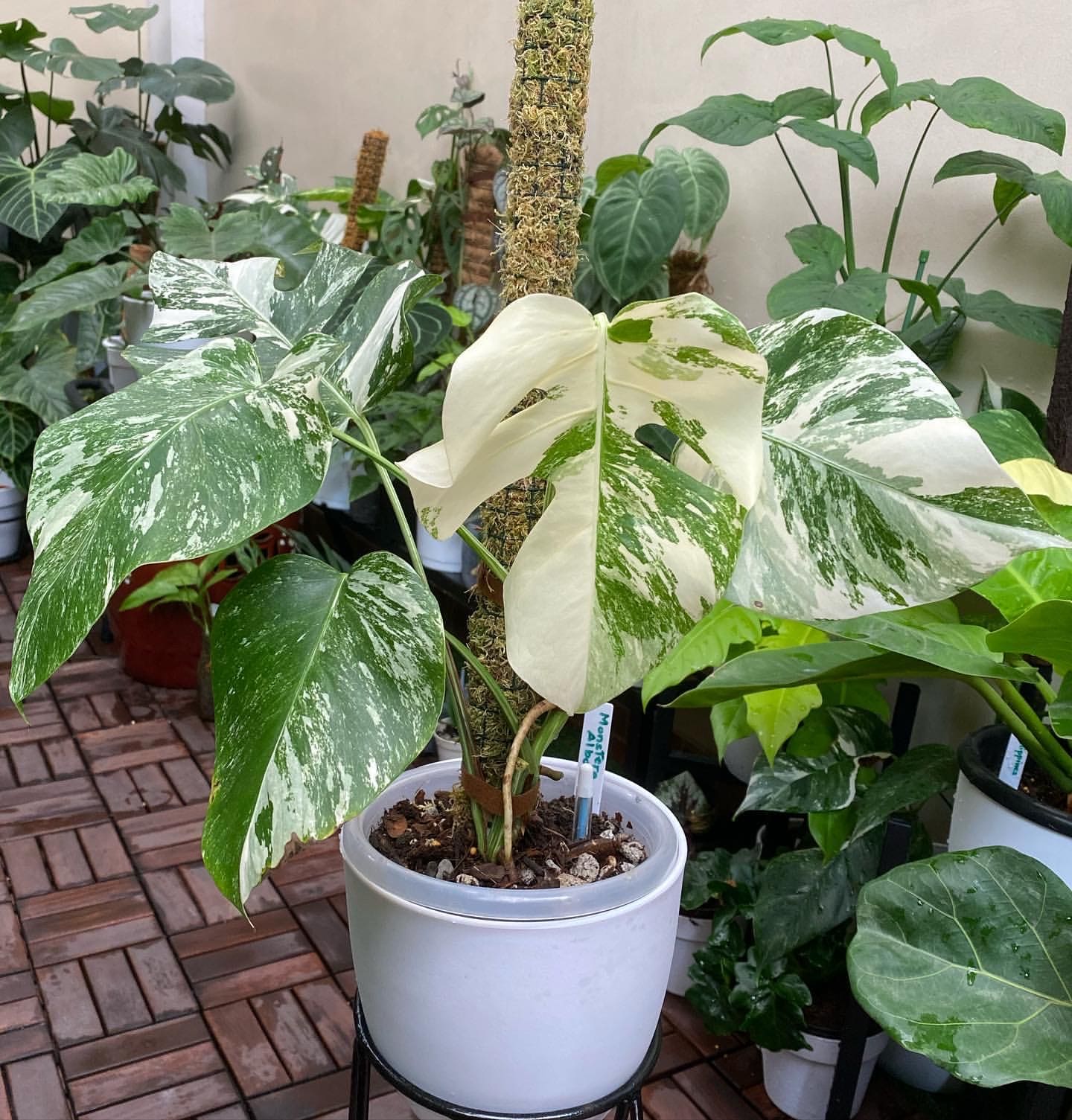
Water Thoroughly Then Allow to Dry
Monsteras albo like a thorough watering until it runs from the drainage holes. Then allow the soil to partially dry out before watering again.
Check Moisture Levels
Stick your finger into the top few inches of soil to check the moisture level before watering:
- Wet soil = don’t water
- Dry topsoil but damp lower down = time to water
- Bone dry throughout pot = waited too long to water
Water less in winter when growth slows. The leaf tips turning brown means you are overwatering.
Water with Care
Always water directly into the soil, not on the leaves, to prevent issues like bacterial leaf spot. Filtered, room temperature water is best. Let the pot drain fully after watering before returning the saucer.
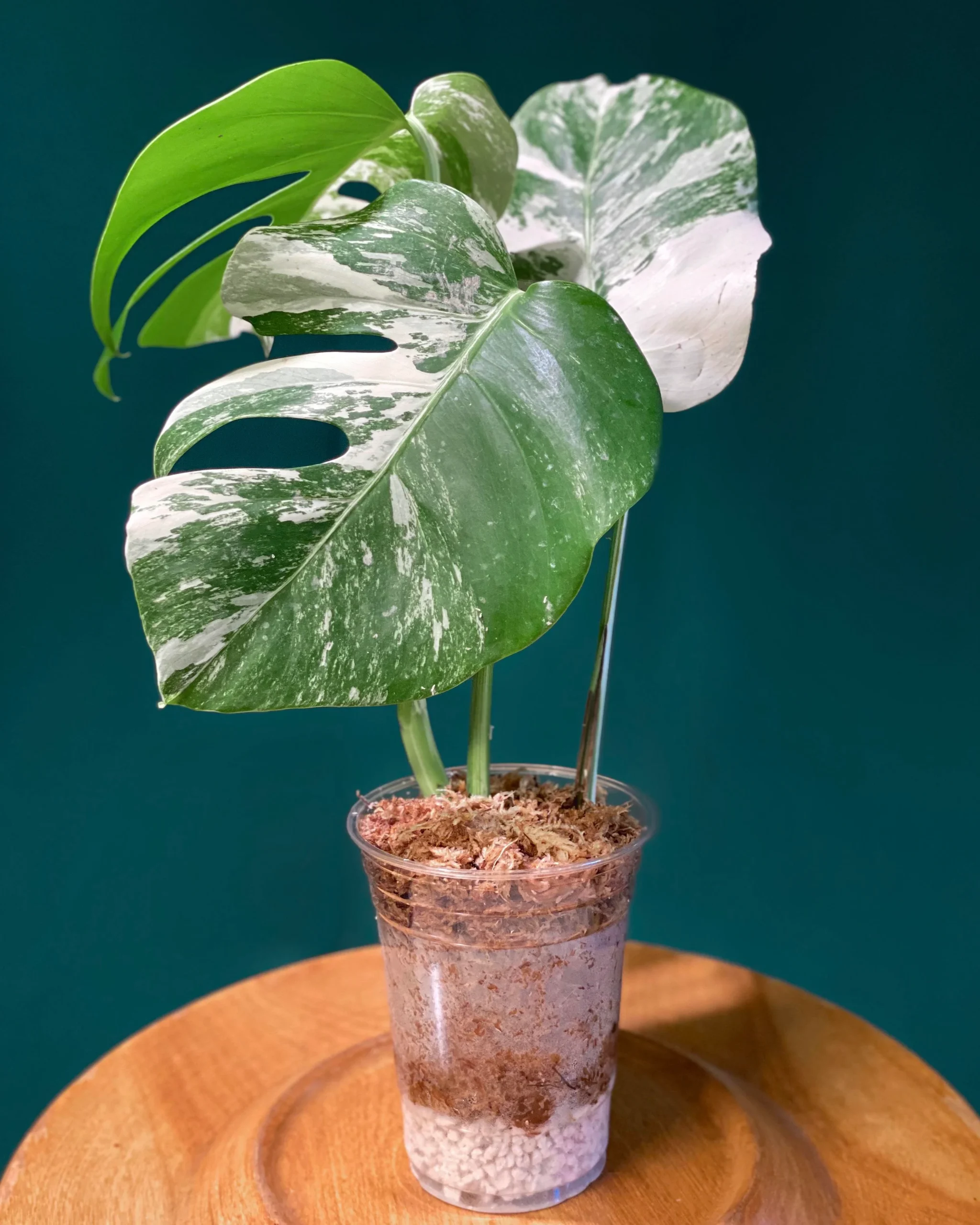
“Discover the unique charm of Monstera Albo today and elevate your space with its stunning foliage. Click to shop now and bring this exotic beauty home!”
Provide the Right Light
Monsteras albo need bright, indirect light to thrive and keep their variegation. Direct hot sun will scorch the fragile white parts of leaves.
Light Requirements
Place your Monstera albo:
- Near a north, east or west facing window (south can be too intense)
- Back from the window a few feet to diffuse the light
- Where it gets 4-6 hours of bright daylight
Supplement with a grow light if needed. Rotate the plant periodically so all sides get light. “Find out how much light your Monstera needs.”
Signs of Insufficient Light
If your Monstera albo has:
- Smaller leave size
- Less white variegation
- Leggy growth with fewer leaves
It needs more light. Acclimate it slowly to prevent leaf burn.
Use a Support Structure
In their native rainforest habitat, Monsteras albo climb up trees. Use a moss pole, plant stand or trellis in your home to support the heavy vining growth. “Understand the importance of support structures for Monstera plants.”
Moss Pole Benefits
- Encourages bigger, more fenestrated leaves
- Absorbs and releases moisture
- Looks like a tree trunk in nature
Tie new stems gently to the support structure with plant ties or velcro strips as they grow. Keep rotating the plant around the support.
No Support Downsides
Without support, Monsteras albo will:
- Develop smaller leaves
- Produce leggy, weaker growth
- Likely lose lower leaves over time
Support helps the plant establish a strong root system and shapely form.
Maintain Ideal Temperatures
Monsteras albo prefer consistent warm temperatures between 65-80°F during the day and around 60°F at night.
Effects of Temperature Fluctuation
Too hot or cold leads to:
- Slowed growth
- Leaf edges browning
- Increased pest and disease issues
- Variegation fading or disappearing
Keep your plant away from cold drafts, hot radiators, and direct sun hitting the pot. A room with central heating and AC provides the most stable environment.
Tropical Origins
Remember, Monsteras hail from tropical jungles! Daily temperature flux greater than 10°F stresses them. Monitor spots near windows and doors. Move plants as needed to maintain ideal temps.
Conclusion
Caring for rare beauties like the Monstera albo can seem daunting but just focus on these five key aspects: soil, water, light, support and temperatures. Mix a chunky, aerated potting mix, let the plant dry out some between waterings, provide bright indirect light, use a support structure, and aim for warm, consistent temps. Do this and your Monstera albo will reward you with spectacular variegated leaves! Check the plant weekly and make any adjustments needed to keep it happy and healthy in your home.
FAQ
- What are the optimal lighting conditions for Monstera Albo?
- FAQ Answer: Monstera Albo thrives in bright, indirect light. Direct sunlight can scorch its leaves, while too little light can slow its growth and reduce variegation. A spot near a window with a sheer curtain is often ideal.
- How often should I water my Monstera Albo?
- FAQ Answer: Water your Monstera Albo when the top inch of soil feels dry. Overwatering can lead to root rot, so ensure good drainage. The frequency may vary with temperature and humidity, but generally, it’s about once a week.
- What is the best soil mix for Monstera Albo?
- FAQ Answer: A well-draining, nutrient-rich potting mix is best for Monstera Albo. Combine peat moss, perlite, and pine bark for a mix that retains moisture yet allows excess water to drain.
- How do I encourage more variegation in Monstera Albo leaves?
- FAQ Answer: Variegation is genetic, so it can be unpredictable. However, providing optimal light and not over-fertilizing are key to encouraging variegation. Pruning can also stimulate new growth, potentially increasing variegated patterns.
- Why are my Monstera Albo’s leaves turning yellow?
- FAQ Answer: Yellow leaves can be a sign of overwatering, poor drainage, or nutrient deficiencies. Ensure your plant isn’t sitting in soggy soil and consider if it’s time to fertilize. Also, check for pests as they can cause stress and yellowing.





















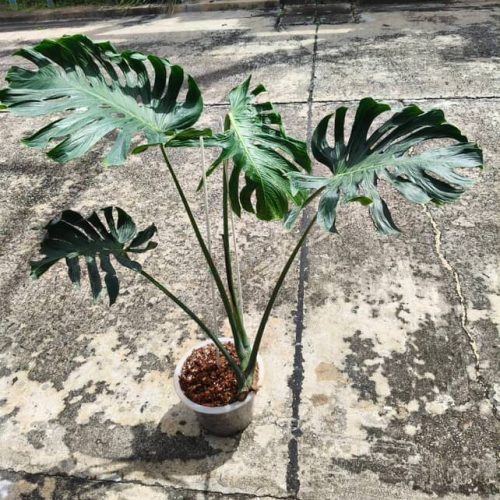
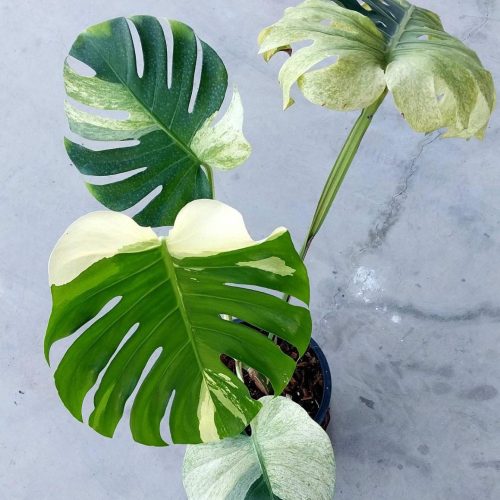



![12x Monstera Borsigiana Albo half leaves variegata [3-4 leaves]](https://greenboog.com/wp-content/uploads/2024/10/Monstera-Borsigiana-Albo-half-leaves-variegata-1-500x500.jpg)
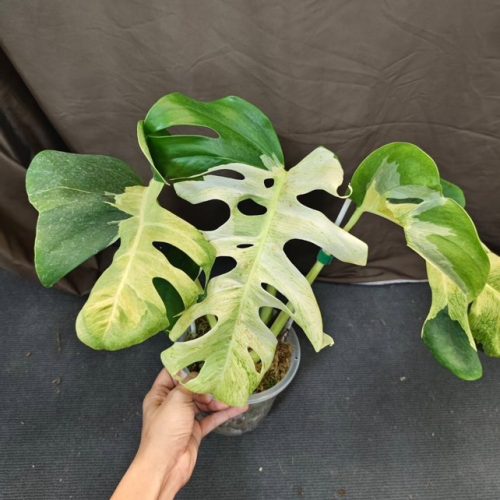

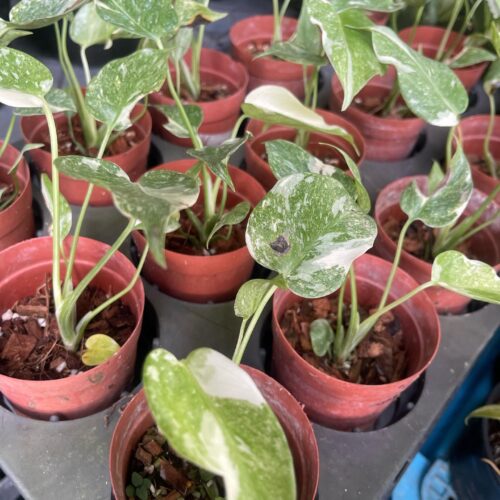
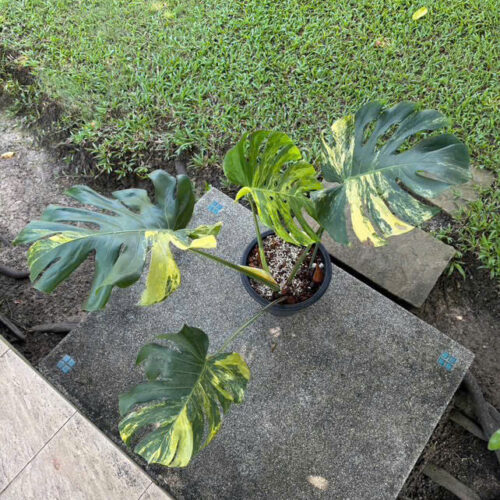
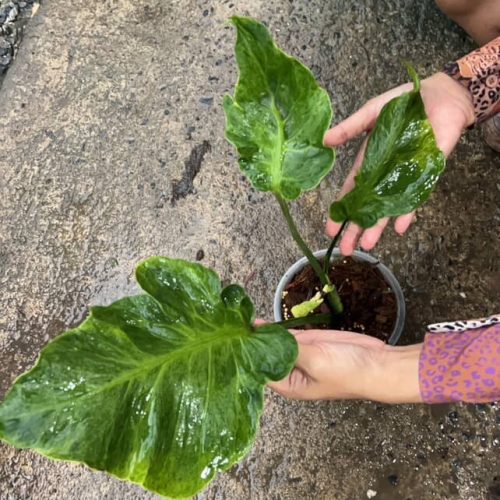
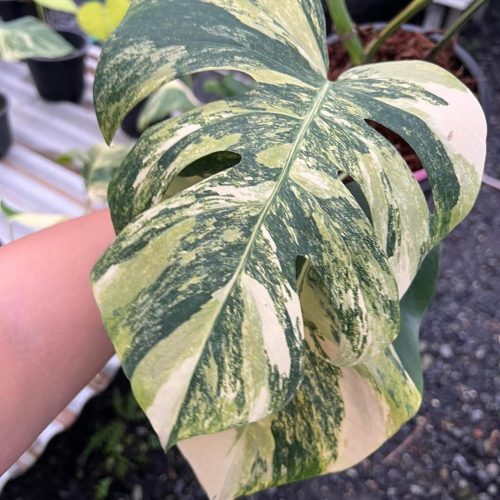

![10 Pots x Monstera Aurea Variegated / Mix Aurea tri color 3-4 leaves [well variegated]](https://greenboog.com/wp-content/uploads/2024/08/Monstera-Aurea-Tri-color-500x500.jpg)

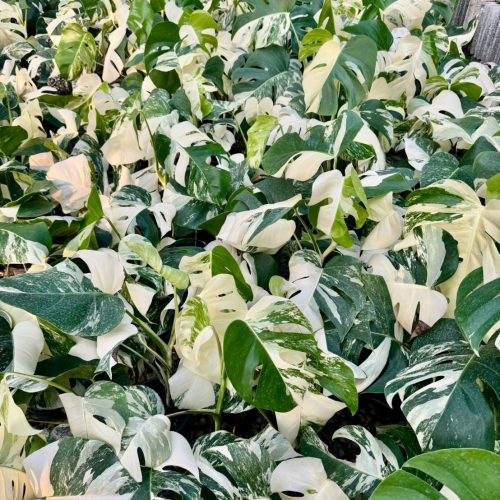
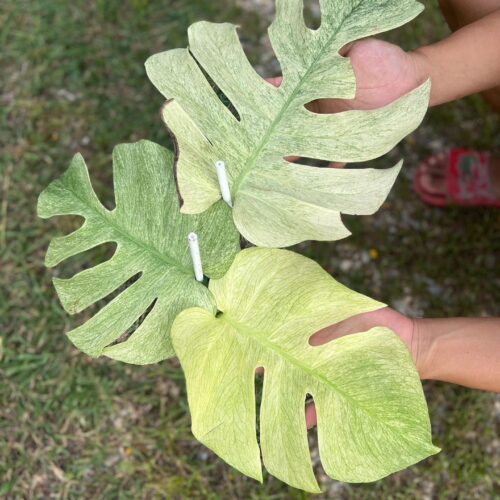
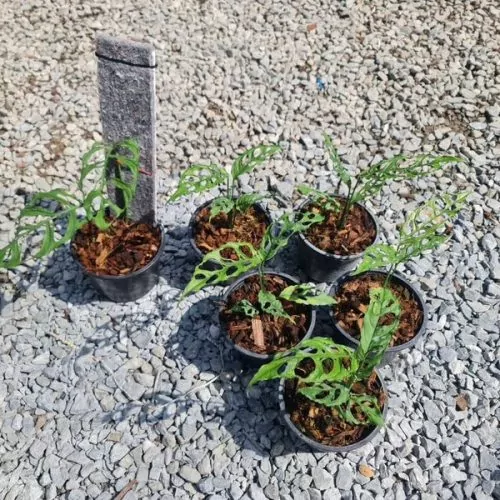
![[SALE] 10 Pots x Monstera Aurea Variegated 3-6 leaves [Medium size]](https://greenboog.com/wp-content/uploads/2025/01/Monstera-Aurea-variegated-4-6-leafs-500x482.jpg)

